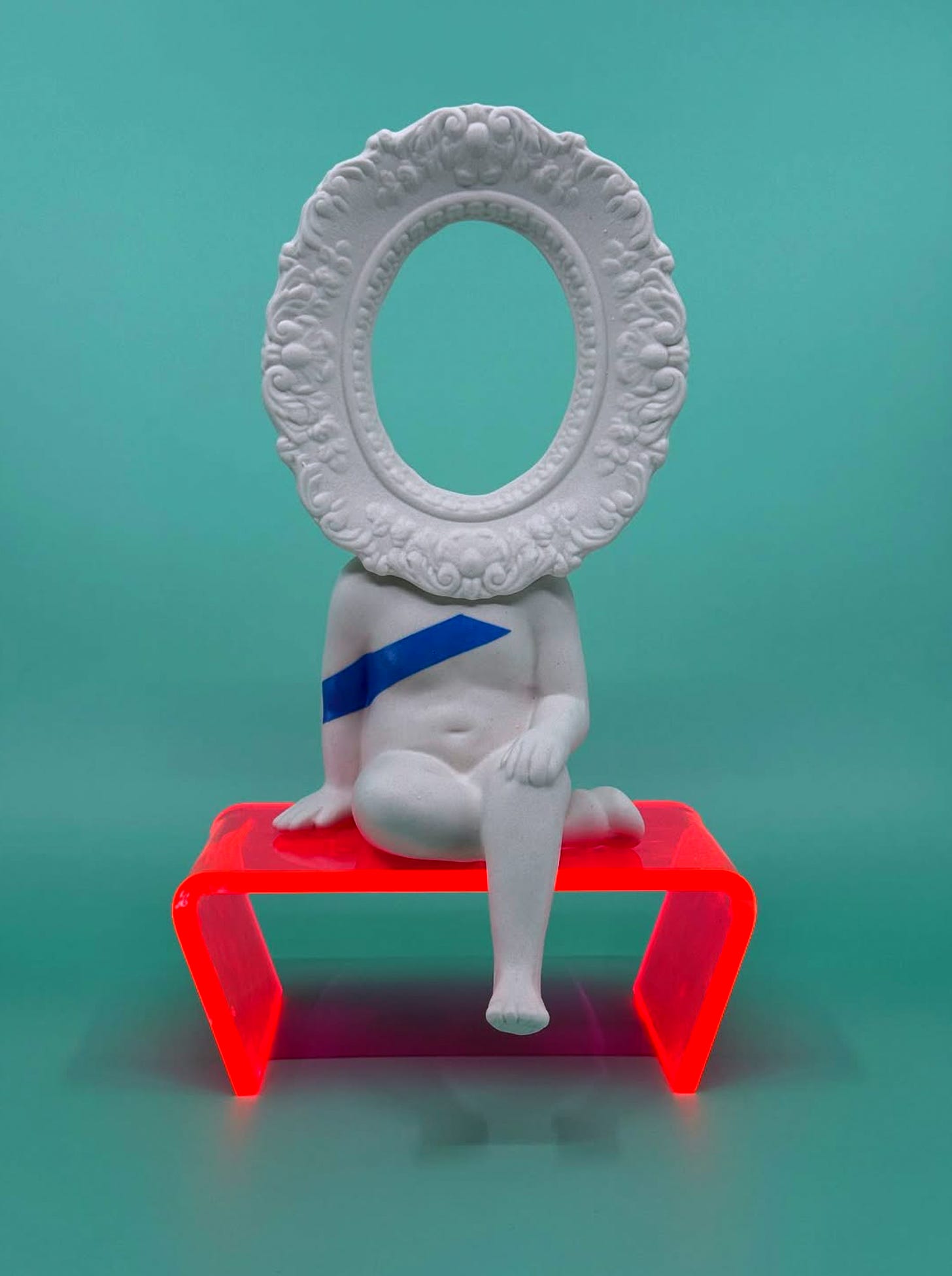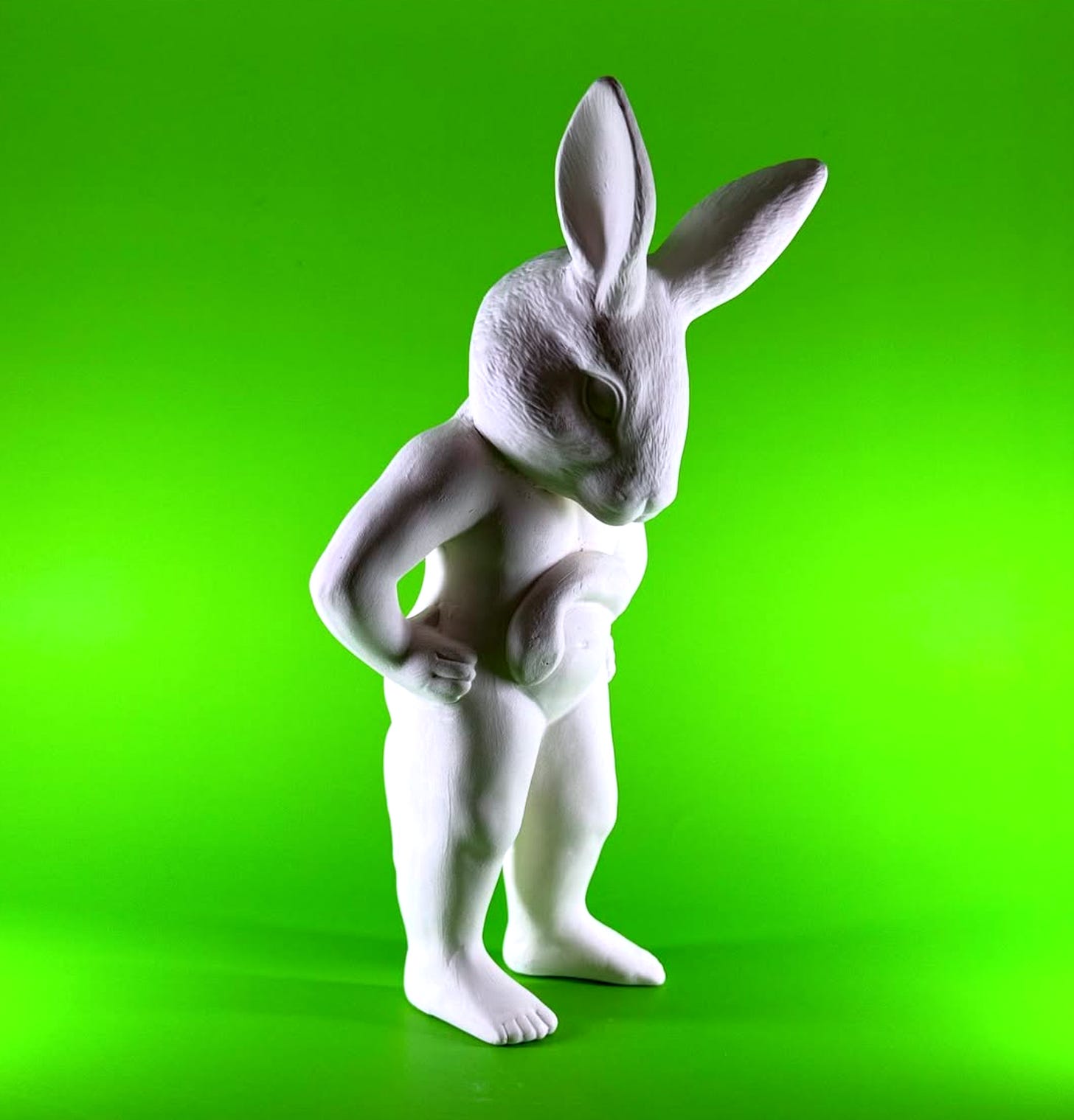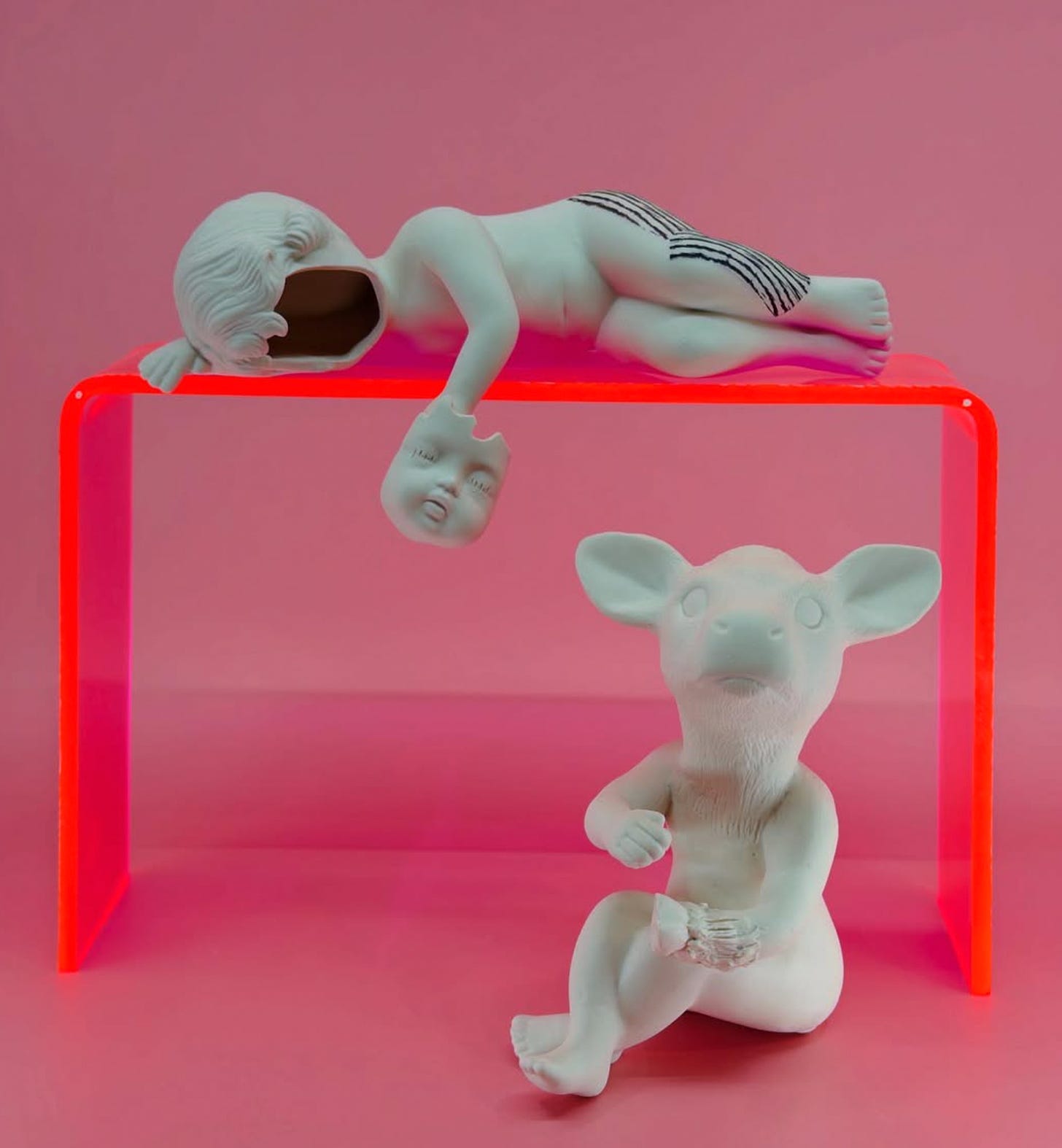Next Friday, July 18, my husband, Jeffery Paul (Herrity), has an exhibit opening at Alma’s Gallery here in Richmond, Virginia.
His exhibit is called Assembly, and it features the porcelain ceramic figurines he’s become known for. These works are assemblages created from slip-cast molds from the 1960s and ’70s—kitschy angels, woodland animals, and other nostalgic curios. Once he slip-casts them, Jeff pulls them apart and reassembles them into fantastical, surrealist figures.
What I love about Jeff’s art is that, at first glance, it’s instantly recognizable. We’ve all seen these kinds of objects in junk shops and antique malls. But then something shifts. They become uncanny—familiar, but exuberantly strange in a way that draws you in.
It’s in the tension between the familiar and the bizarre that, as a viewer, you’re invited to enter. You must bring yourself into the work and create your own narrative to understand what you’re seeing—to make meaning of the figures.
Of course, I have particular insight into the artist (he’s my husband, after all), and I know he has a narrative in mind. But what’s so compelling is that he always leaves space for your story—for the viewer’s imagination. His work insists on openness.
And this openness—this act of interpretation—is something I’ve always been fascinated by.
When I was a freshman in college, I read Ways of Seeing by John Berger. He writes that when we look at art:
“We never look at just one thing; we are always looking at the relation between things and ourselves. Our vision is continually active, continually moving, continually holding things in a circle around itself, constituting what is present to us as we are.”
That line has always stayed with me. Because when we look at a piece of art—or read a book—it’s never just about the object itself. It’s about who we are at that particular moment in time. Our attempt to understand what we’re seeing reveals something about us.
Lately, I’ve been thinking a lot about interpretation—not just of art, but of each other.
Because, in so many ways, that’s what art is: a way of seeing and understanding humanity.
This has felt especially true since the loss of my mother at the end of May.
One of the things about my mother—something that may be true of many in her generation—is that she wasn’t especially forthcoming about herself. I’ve often thought that “the greatest generation” believed they might lose some kind of authority or power if they revealed too much of who they really were to their children.
As her son, that was deeply frustrating. I never felt I fully knew her.
And if you recall your high school or middle school science classes, you might remember being given a “black box” to learn about the scientific method—you’d have to observe the outside and try to determine what was inside based on limited evidence.
That’s what being my mother’s child sometimes felt like. She was a kind of black box.
And now, quite literally, she is: her ashes are in a black box sitting on my mantel, waiting for interment at her celebration of life in my hometown, Marion, Virginia, in early August.
So my mom has gone from being a metaphor to a literal, physical representation of my frustration at not knowing her fully.
But in the months since her death, something unexpected has happened.
People—caregivers, friends, even distant acquaintances—have started telling me stories about her or sharing their perspectives on her.
One caregiver told me how much my mom had taught her, how they’d talked about everything from God to parenting to blue chip stocks. Haha.
I’ve come to realize my mom shared different parts of herself with different people—my brothers, her friends, my father (who died when I was eight), and even with me.
At first, this piecemeal version of her irritated me. Why had she parsed herself out like that? Why hadn’t I gotten the whole of her?
But then I began to understand: perhaps no one had the whole of her. Maybe each of us held a fragment. And maybe the part she shared with me was unique to me.
Maybe that was a kind of knowing. Knowing at a slant. And it was okay.
Maybe that’s what interpretation is—this assembling of pieces, this looking, wondering, and trying to understand. It’s the process; it’s the possibility.
My experience of my mom was (and continues to be) an act of interpretation. And oddly, that frustration—that searching—keeps her alive in me. Perhaps it was her clever ploy to avoid being forgotten. After all, I do love a good mystery!
All our relationships are like that, to varying degrees. We’re always interpreting one another. My mother’s keeping of her own counsel just made that process more apparent—her outline sharper.
Art is important, then, because it illuminates the way we interpret one another, because good art invites us to make meaning where nothing is fixed.
It’s probably why I’m drawn to crime fiction and mystery—because it’s a genre built around interpretation. It’s about piecing together clues, about trying to understand something fully.
But even in mystery, resolution doesn’t have to be total. In my novels, even at the end—even once the mystery is “solved”—I often leave something unknown. A shadow. A space.
Because I think that’s true to life. We never fully understand each other. We can get close, but never all the way.
That’s certainly true of the past, of history, of the people we’ve lost. We can know a lot, but not everything.
That’s what I love about Jeff’s art. (I know, I’m biased.)
It’s not just that it’s open to interpretation—it’s that Jeff invites it. And that invitation, in itself, feels deeply affirming.
Truth may always be out of reach—we are black boxes to each other, in life and in death—but we can offer something just as vital: not the promise of total understanding, but the willingness to be seen. To be read. To be open to interpretation.







What surprised me in the comments after my mother's death was how many of my female friends had admired her as a working woman, and considered her a role model for them, as they graduated from college and embarked on careers. It was a side of her that I knew, but never considered how it mattered to others.